2020-10-01 - Nº 283
Editorial
Esta é a Newsletter Nº 283 que se apresenta com o mesmo formato que as anteriores. Se gostar da Newsletter partilhe-a!
Todas as Newsletters encontram-se indexadas no link.
Esta Newsletter tem os seguintes tópicos:
Faz hoje anos que nascia, em 1842, o inventor e poeta francês Charles Cros. Ele projectou um telégrafo automático e exibiu-o na Feira Mundial de 1867. Ele enviou à Société française de photographie, em 1869, um sistema de reprodução de imagens coloridas. Além disso, ele entregou planos viáveis em 18 de abril de 1877 para a Académie des Sciences, para um aparelho chamado paleofone, que era o princípio do gramofone. Assim, ele teve a ideia antes de Edison. No entanto, ele morreu na pobreza e nunca foi reconhecido pelas suas descobertas em vida, devido a concorrentes mais influentes e com melhor financiamento.
Faz também hoje anos que nascia, em 1881, o pioneiro da aviação americana William E. Boeing. Ele começou a interessar-se pela aviação quando treinou na escola de voo de Glenn L. Martin em 1915 e comprou sua própria aeronave. Em 1916, Boeing co-fundou a Pacific Aero Products Company (logo renomeada como Boeing Airplane Company). Em 1920, ele recebeu uma grande encomenda de guerra para 200 aviões de combate MB-3. A Boeing Air Transport começou a transportar correio e passageiros em Julho de 1927. Por meio de fusões com outras indústrias de aeronaves, ele construiu a United Aircraft and Air Transport, a empresa de aviação mais lucrativa do seu tempo. Em 1934, a acção da concorrência do governo dividiu a companhia. A United Airlines tornou-se uma empresa independente. Mantém-se até aos dias de hoje como uma das duas grandes companhia de fabrico de aviões comerciais.
Por fim, faz hoje anos que nascia, em 1939, o Astrofísico norte-americano George Robert Carruthers. Ele foi o principal inventor de uma nova câmara espacial para medir a luz ultravioleta que pode ser usada para identificar átomos e moléculas interestelares. Após vários anos em desenvolvimento, foi levada à lua na missão Apollo 16 (1972). Posicionada na superfície da lua, a câmara também pode capturar imagens dos gases da atmosfera terrestre. A concentração de poluentes, como o monóxido de carbono, no ar ao redor de grandes cidades pode ser determinada para muitas cidades ao mesmo tempo. Outras câmaras espaciais desenvolvidas por Carruthers e seus colegas pesquisaram a camada de ozono e transmitiram fotos de estrelas e planetas distantes para análise por computador. Ele também foi pioneiro no desenvolvimento de telescópios electrónicos.
Em 1880, a primeira fábrica de lâmpadas incandescentes eléctricas dos EUA foi inaugurada em Menlo Park, N. J. The Edison Lamp Works. No espaço de um ano e meio foram produzidas mais de 130.000 lâmpadas.
Faz hoje anos que o primeiro protótipo do Concorde (001) passou a barreira do som. O seu primeiro voo tinha sido seis meses antes. Foi durante o seu 102º voo de teste que atingiu Mach 2. O seu "irmão" Inglês alcançou o mesmo resultado uma semana depois. O Concorde foi o primeiro avião do mundo totalmente controlado por computador. No início, grupos ambientais criticaram o ruído do Concorde durante a descolagem e o consumo de combustível. O seu impacto nas viagens aéreas internacionais foi limitado pelos altos custos de operação da aeronave. Apenas a British Airways e a Air France operaram a aeronave. O serviço terminou com voos finais de passageiros a 24 de Outubro de 2003. Não existe até à data nenhuma outra forma comercial de viajar tão rápido.
Na Newsletter desta semana apresentamos diversas noticias, artigos científicos assim como projetos de maker.
 João Alves ([email protected])
João Alves ([email protected])
O conteúdo da Newsletter encontra-se sob a licença  Creative Commons Attribution-NonCommercial-ShareAlike 4.0 International License.
Creative Commons Attribution-NonCommercial-ShareAlike 4.0 International License.
Outras Notícias
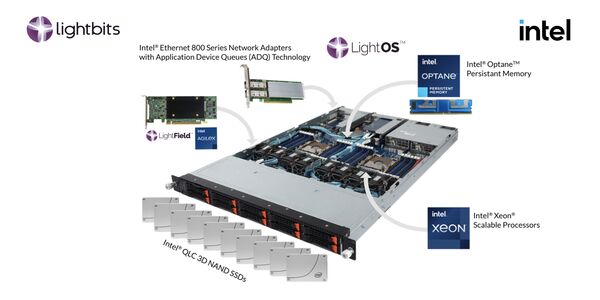
Intel Enters into Strategic Collaboration with Lightbits Labs
"Intel Corp. and Lightbits Labs today announced an agreement to propel development of disaggregated storage solutions to solve the challenges of today’s data center operators who are craving improved total-cost-of-ownership (TCO) due to stranded disk capacity and performance. This strategic partnership includes technical co-engineering, go-to-market collaboration and an Intel Capital investment in Lightbits Labs. Lightbits’ LightOS™ product delivers high-performance shared storage across servers while providing high availability and read-and-write management designed to maximize the value of flash-based storage. LightOS, while being fully optimized for Intel® hardware, provides customers with vastly improved storage efficiency and reduces underutilization while maintaining compatibility with existing infrastructure without compromising performance and simplicity. Lightbits Labs will enhance its composable disaggregated software-defined storage solution, LightOS, for Intel® technologies, creating an optimized software and hardware solution. The system will utilize Intel® Optane™ persistent memory and Intel® 3D NAND SSDs based on Intel® QLC Technology, Intel® Xeon® Scalable processors with unique built-in artificial intelligence (AI) acceleration capabilities and Intel® Ethernet 800 Series Network Adapters with Application Device Queues (ADQ) technology." [...]

Samsung Brings 5G Indoors With New Commercial 5G mmWave Small Cell For In-Building Use
"Small cell solution is part of Samsung’s newly-branded 5G in-building product portfolio—Samsung Link–which helps operators expand and enhance 5G experiences Verizon’s 5G Ultra Wideband network will be the first to use Samsung’s new small cell—Link Cell—featuring the Qualcomm® 5G RAN Platform Samsung Electronics today unveiled a new integrated 5G mmWave small cell for indoor use as part of the company’s full suite of 5G in-building products, Samsung Link. Samsung’s new 5G indoor small cell–Link Cell–will help provide seamless and enhanced 5G experiences to users in indoor environments. It delivers 5G-powered applications within enterprises, including manufacturing or distribution facilities, corporate offices, and entertainment or public venues (such as shopping centers, stadiums or hotels). Link Cell is among the first commercial products available globally that provides wireless operators with a mmWave indoor small cell. Link Cell gives wireless operators a way to extend 5G service—with its high throughput and low latency capabilities—into businesses and venues. It is also a critical component for future private 5G networks in enterprises, such as manufacturing, healthcare, retail and warehouse facilities." [...]

New PIC24F MCUs Feature Low-power Animated Display Driver for Battery-powered Devices
"Low-power MCU family offers power-saving peripherals, hardware safety and secure code protection System developers of battery-powered and other power-conscious designs with and without LCD displays can now easily add an array of innovative features using a new line of PIC® eXtreme Low Power (XLP) microcontrollers (MCUs) from Microchip Technology Inc. (Nasdaq: MCHP). Packed with 14 types of Core Independent Peripherals (CIPs) that operate outside the Central Processing Unit (CPU) for power savings, the PIC24F GU and GL families of MCUs feature the CIP called LCD with Autonomous Animation. Most display applications involve a few common animations like periodically alternating between displays and blinking of pixels to indicate operation. By using the integrated LCD driver with autonomous animation, developers can offload most of these simple animation routines from the CPU, allowing animation even in doze, idle or sleep modes for optimal power savings. To assist in quickly designing such display interfaces, the new MCUs come with MPLAB® Code Configurator (MCC) support. This graphical programming environment with LCD display designer helps eliminate the meticulous and time-consuming task of mapping the pins and segments." [...]

New Arm technologies enable safety-capable computing solutions for an autonomous future
"Today, Arm unveiled new computing solutions to accelerate autonomous decision-making with safety capability across automotive and industrial applications. The new suite of IP includes the Arm® Cortex®-A78AE CPU, Arm Mali™-G78AE GPU, and Arm Mali-C71AE ISP, engineered to work together in combination with supporting software, tools and system IP to enable silicon providers and OEMs to design for autonomous workloads. These products will be deployed in a range of applications, from enabling more intelligence and configurability in smart manufacturing to enhancing ADAS and digital cockpit applications in automotive. “Autonomy has the potential to improve every aspect of our lives, but only if built on a safe and secure computing foundation,” said Chet Babla, vice president, Automotive and IoT Line of Business at Arm. “As autonomous decision-making becomes more pervasive, Arm has designed a unique suite of technology that prioritizes safety while delivering highly scalable, power efficient compute to enable autonomous decision-making across new automotive and industrial opportunities.” Cortex-A78AE: High performance in safety critical applications The new Arm Cortex-A78AE CPU is Arm’s latest, highest performance safety capable CPU, offering the ability to run different, complex workloads for autonomous applications such as mobile robotics and driverless transportation. It delivers: A 30% performance uplift compared to its predecessor." [...]

Accelerating Recycling-Oriented Manufacturing with Plant-Derived Cellulose Fiber
"Panasonic has over 300 manufacturing sites around the world. In order to reduce the amount of plastic used at these sites and to contribute to the realization of a circular society, Panasonic has been undertaking research and development of eco-conscious materials that can potentially replace plastics. In 2019, Panasonic introduced a composite processing technology that combines a high concentration of plant-derived cellulose fiber resin. As a molding material that will further promote recycling-oriented manufacturing, it is already being applied to chassis of consumer electronics, reusable cups, etc. Worldwide, more than 300 million tons of plastic is being consumed every year, and this number is still on the rise. On the other hand, only 14% is being recycled (according to documents published by the United Nations Environment Programme)." [...]

Toshiba’s Cascode GaN Discrete Power Device Realize Stable Operation and Simplifies System Design with Direct Gate Drive
"Toshiba Electronic Devices & Storage Corporation (“Toshiba”) has developed a gallium nitride (GaN) cascode with a direct gate drive that realizes stable operation and simplification of system design. The device reduces risk of additional energy loss during switching due to false on, and like silicon its switching speed can be easily adjusted, an important consideration in the design of power electronics systems. Details of the new discrete device were reported at the IEEE-sponsored International Symposium on Power Semiconductor Devices and ICs 2020 (ISPSD 2020), held online. GaN power devices are candidates for achieving high efficiency and downsizing systems. They are currently used in quick chargers for smartphones and computers, and are expected to be adopted in the power supply of industrial equipment and servers. Generally, power devices need to be normally-off, but GaN high-electron-mobility transistors (HEMTs) are normally-on." [...]
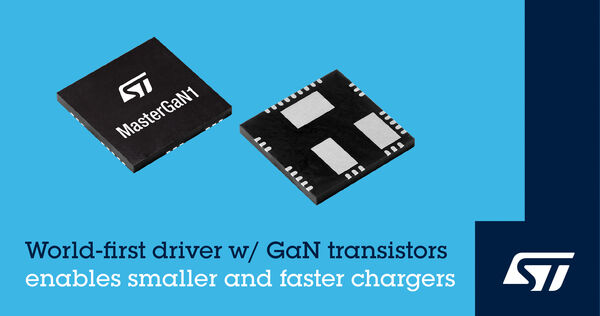
STMicroelectronics Pioneers Smaller and Faster Chargers and Power Supplies with World’s First Driver and GaN Device
"STMicroelectronics, a global semiconductor leader serving customers across the spectrum of electronics applications, has unveiled MasterGaN®, the world-first platform embedding a half-bridge driver based on silicon technology along with a pair of gallium-nitride (GaN) transistors. The combination will accelerate the creation of next-generation compact and efficient chargers and power adapters for consumer and industrial applications up to 400W. GaN technology enables these devices to handle more power even as they become smaller, more lightweight, and more energy efficient. These improvements will make a difference for smartphone ultra-fast chargers and wireless chargers, USB-PD compact adapters for PCs and gaming, as well as in industrial applications like solar-energy storage systems, uninterruptible power supplies, or high-end OLED TVs and server cloud. Today’s GaN market is typically served by discrete power transistors and driver ICs that require designers to learn how to make them work together for best performance. ST’s MasterGaN approach bypasses that challenge, resulting in faster time to market and assured performance, together with a smaller footprint, simplified assembly, and increased reliability with fewer components." [...]
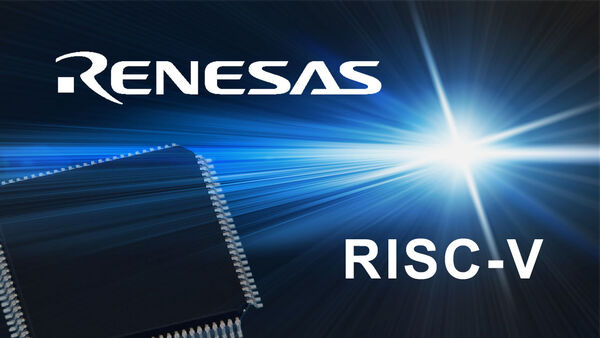
Renesas Selects Andes RISC-V 32-Bit CPU Cores for its First RISC-V Implementation of ASSPs
"Renesas Electronics Corporation (TSE:6723), a premier supplier of advanced semiconductor solutions, today announced a technology IP cooperation with Andes Technology, an advanced supplier of RISC-V based embedded CPU cores and associated SoC development environment. Renesas selected the AndesCore™ IP 32-bit RISC-V CPU cores to embed into its new application-specific standard products that will begin customer sampling in the second half of 2021. “We are thrilled that Renesas, a top-tier global MCU provider has designed Andes RISC-V cores into their pre-programmed application-specific standard products. Renesas and Andes share the same vision to welcome the era of RISC-V being the mainstream CPU instruction set architecture (ISA) for system-on-chips (SoC),” said Frankwell Lin, President of Andes Technology Corp. “Not only does this represent a milestone for Andes, but it marks the arrival of the open-source RISC-V ISA as a mainstream computing engine. Renesas customers will benefit from a modern ISA constructed for the needs of 21st century computing.” “The scalable range of performance, selectable safety features, and customization options provided by the Andes RISC-V core IP enables Renesas to provide innovative solutions for future application-specific standard products,” said Sailesh Chittipeddi, Executive Vice President, General Manager of Renesas’ IoT and Infrastructure Business Unit. “Customers looking for cost-effective alternative paths for existing or emerging applications will benefit from the reduced time to market and lower development costs.” The delivery of Renesas’ pre-programmed ASSP devices based on the RISC-V core architecture, combined with specialized user interface tools to set the application programmable parameters, will provide customers with complete and optimized solutions." [...]
Ciência e Tecnologia
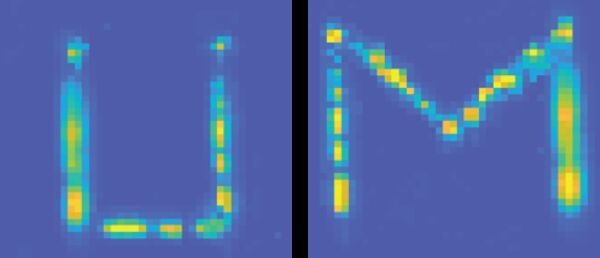
A self-erasing chip for security and anti-counterfeit tech
"Self-erasing chips developed at the University of Michigan could help stop counterfeit electronics or provide alerts if sensitive shipments are tampered with. They rely on a new material that temporarily stores energy, changing the color of the light it emits. It self-erases in a matter of days, or it can be erased on demand with a flash of blue light. “It’s very hard to detect whether a device has been tampered with. It may operate normally, but it may be doing more than it should, sending information to a third party,” said Parag Deotare, assistant professor of electrical engineering and computer science. With a self-erasing bar code printed on the chip inside the device, the owner could get a hint if someone had opened it to secretly install a listening device." [...]
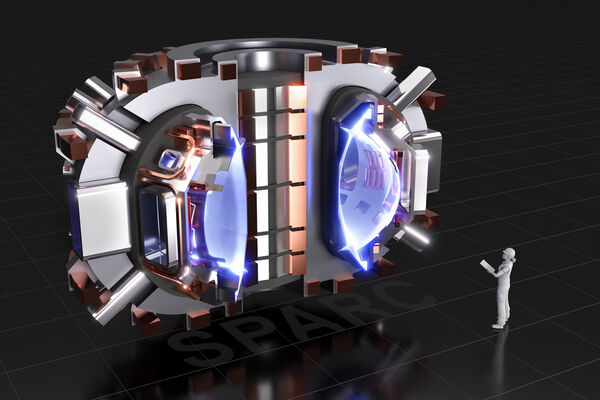
Validating the physics behind the new MIT-designed fusion experiment
"Seven studies describe progress thus far and challenges ahead for a revolutionary zero-emissions power source. Two and a half years ago, MIT entered into a research agreement with startup company Commonwealth Fusion Systems to develop a next-generation fusion research experiment, called SPARC, as a precursor to a practical, emissions-free power plant. Now, after many months of intensive research and engineering work, the researchers charged with defining and refining the physics behind the ambitious tokamak design have published a series of papers summarizing the progress they have made and outlining the key research questions SPARC will enable. Overall, says Martin Greenwald, deputy director of MIT’s Plasma Science and Fusion Center and one of the project’s lead scientists, the work is progressing smoothly and on track. This series of papers provides a high level of confidence in the plasma physics and the performance predictions for SPARC, he says. No unexpected impediments or surprises have shown up, and the remaining challenges appear to be manageable." [...]

Development of Highly Compact Radar Sensors for Industry
"Radar systems have long been used on aircraft or ships. Now, they are increasingly applied in cars for the “short range” in particular. Thanks to the great progress achieved in semiconductor technology in the past years, another miniaturization step is now possible. For this, researchers of Karlsruhe Institute of Technology (KIT), in cooperation with the Fraunhofer Institute for Applied Solid State Physics (IAF) in Freiburg and the industry partner VEGA Grieshaber KG, develop highly compact radar sensors of modular design that are excellently suited for various applications in industry. A so far unmatched resolution can be reached by radar sensors, in which antennas can be integrated in chips or in the chip housing due to the small wavelength. However, frequencies above 100 GHz have hardly been used so far, as this requires extremely complex mounting and connection technologies." [...]

Wired Up: Majorana Fermions for Quantum Computing
"Majorana fermions exhibit a strange property: these exotic particles cannot be distinguished from their own antiparticles. Nevertheless, technically they could be extremely useful as qubits for quantum computers. This is because every two Majorana fermions form an entangled pair that can be extremely resistant to external influences. However, Majorana fermions are very difficult to detect. This is a major hurdle for their production and characterization. Scientists from Forschungszentrum Jülich and RWTH Aachen University together with partners from the University of Hamburg can now demonstrate a possible way around this difficulty." [...]

Noble Metal Clusters Can Enhance Performance of Catalysts and Save Resources
"Billions of noble metal catalysts are used worldwide for the production of chemicals, energy generation, or cleaning the air. However, the resources required for this purpose are expensive and their availability is limited. To optimize the use of resources, catalysts based on single metal atoms have been developed. A research team of Karlsruhe Institute of Technology (KIT) demonstrated that noble metal atoms may assemble to form clusters under certain conditions. These clusters are more reactive than the single atoms and, hence, exhaust gases can be much better removed. The results are reported in Nature Catalysis (DOI: 10.1038/s41929-020-00508-7)." [...]
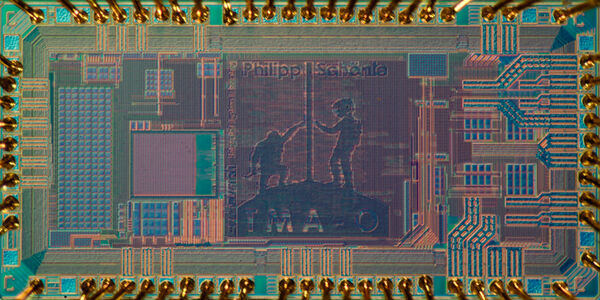
Microelectronics shed light on neural behaviour
"Researchers at ETH Zurich – in collaboration with colleagues from EPFL in Lausanne and Harvard Medical School – have developed a system that allows them to optically stimulate individual nerve fibres in living mice. Through this process, they have demonstrated that the nervous system has a direct influence on the immune system. Over the last ten years, a new method has literally shed more light on the brain. “Optogenetics” allows scientists to deliberately stimulate genetically modified nerve cells and thoroughly investigate their functioning within the complex network inside the skull. This technique represents a revolution in neuroscience, but to date, it could only be applied to study the central nervous system, but not the peripheral nervous system. Miniaturisation through chip technology Now, a team of electrical engineers led by Qiuting Huang, a professor at the Institute for Integrated Systems at ETH Zurich, together with researchers from EPFL in Lausanne and Harvard Medical School, have developed a system that connects implantable light emitting diodes (LED) with a tiny device on the subject’s head which can be controlled from a tablet via Bluetooth." [...]

Robotic Fabric: A Breakthrough with Many Uses
"Researchers at Yale have developed a robotic fabric, a breakthrough that could lead to such innovations as adaptive clothing, self-deploying shelters, or lightweight shape-changing machinery. The lab of Prof. Rebecca Kramer-Bottiglio has created a robotic fabric that includes actuation, sensing, and variable stiffness fibers while retaining all the qualities that make fabric so useful - flexibility, breathability, small storage footprint, and low weight. They demonstrated their robotic fabric going from a flat, ordinary fabric to a standing, load-bearing structure. They also showed a wearable robotic tourniquet and a small airplane with stowable/deployable fabric wings. The results are published this week in Proceedings of the National Academy of Sciences. The researchers focused on processing functional materials into fiber-form so they could be integrated into fabrics while retaining its advantageous properties." [...]
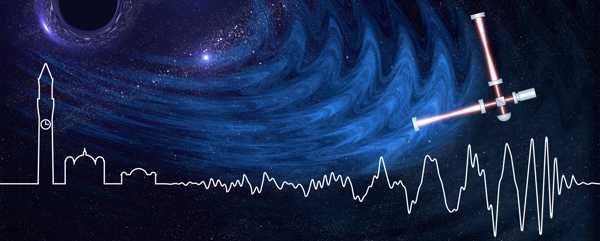
Detection of gravitational wave 'lensing' could be some way off
"Gravitational wave scientists looking for evidence of ‘lensing’, in which the faintest gravitational wave signals become amplified, are unlikely to make these detections in the near future according to new analysis by scientists at the University of Birmingham. A team in the University’s School of Physics and Astronomy and the Institute for Gravitational Wave Astronomy has analysed currently available gravitational wave data to predict that these elusive signals are likely to remain undetected by the instruments currently operated by the LIGO and Virgo Collaboration. The existence of gravitational lensing was predicted by Einstein and is a well-recognised phenomenon in relation to light waves. Light emitted by distant objects in the Universe is bent by the gravitational pull of other massive objects, such as galaxies when the light source passes behind them. When detected by the earth’s telescopes, this distortion might make the light-emitting object seem larger or closer to earth than it actually is. Scientists predict that the same will be true of signals from gravitational waves – but we won’t find them just yet." [...]
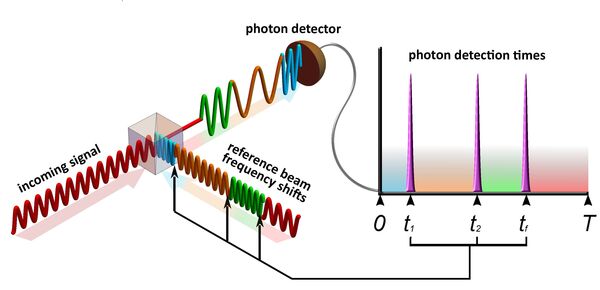
Quantum Matchmaking: New NIST System Detects Ultra-Faint Communications Signals Using the Principles of Quantum Physics
"Researchers at the National Institute of Standards and Technology (NIST) have devised and demonstrated a system that could dramatically increase the performance of communications networks while enabling record-low error rates in detecting even the faintest of signals, potentially decreasing the total amount of energy required for state-of-the-art networks by a factor of 10 to 100. The proof-of-principle system consists of a novel receiver and corresponding signal-processing technique that, unlike the methods used in today’s networks, are entirely based on the properties of quantum physics and thereby capable of handling even extremely weak signals with pulses that carry many bits of data. “We built the communication test bed using off-the-shelf components to demonstrate that quantum-measurement-enabled communication can potentially be scaled up for widespread commercial use,” said Ivan Burenkov, a physicist at the Joint Quantum Institute, a research partnership between NIST and the University of Maryland. Burenkov and his colleagues report the results in Physical Review X Quantum. “Our effort shows that quantum measurements offer valuable, heretofore unforeseen advantages for telecommunications leading to revolutionary improvements in channel bandwidth and energy efficiency.” Modern communications systems work by converting information into a laser-generated stream of digital light pulses in which information is encoded — in the form of changes to the properties of the light waves — for transfer and then decoded when it reaches the receiver. The train of pulses grows fainter as it travels along transmission channels, and conventional electronic technology for receiving and decoding data has reached the limit of its ability to precisely detect the information in such attenuated signals." [...]
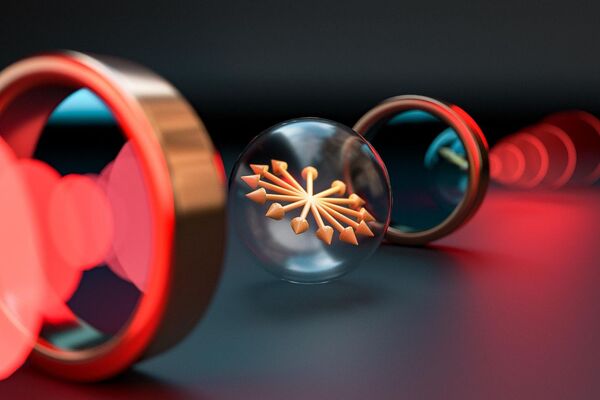
The Return of the Spin Echo
"A research team from Garching and Vienna discovered a remarkable echo effect – it offers exciting new possibilities for working with quantum information. Small particles can have an angular momentum that points in a certain direction – the spin. This spin can be manipulated by a magnetic field. This principle, for example, is the basic idea behind magnetic resonance imaging as used in hospitals. An international research team has now discovered a surprising effect in a system that is particularly well suited for processing quantum information: the spins of phosphorus atoms in a piece of silicon, coupled to a microwave resonator. If these spins are cleverly excited with microwave pulses, a so-called spin echo signal can be detected after a certain time – the injected pulse signal is re-emitted as a quantum echo." [...]
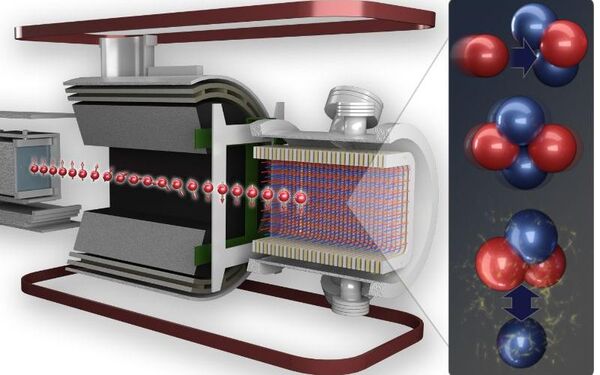
Scientists achieve higher precision weak force measurement between protons, neutrons
"Through a one-of-a-kind experiment at the Department of Energy’s Oak Ridge National Laboratory, nuclear physicists have precisely measured the weak interaction between protons and neutrons. The result quantifies the weak force theory as predicted by the Standard Model of Particle Physics. The team’s weak force observation, detailed in Physical Review Letters, was measured through a precision experiment called n3He, or n-helium-3, that ran at ORNL’s Spallation Neutron Source, or SNS. Their finding yielded the smallest uncertainty of any comparable weak force measurement in the nucleus of an atom to date, which establishes an important benchmark. The Standard Model describes the basic building blocks of matter in the universe and fundamental forces acting between them. Calculating and measuring the weak force between protons and neutrons is an extremely difficult task." [...]
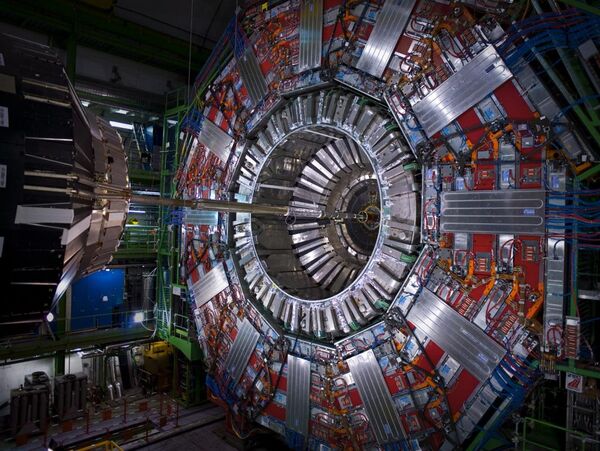
The next big thing: the use of graph neural networks to discover particles
"Machine learning algorithms can beat the world’s hardest video games in minutes and solve complex equations faster than the collective efforts of generations of physicists. But the conventional algorithms still struggle to pick out stop signs on a busy street. Object identification continues to hamper the field of machine learning — especially when the pictures are multidimensional and complicated, like the ones particle detectors take of collisions in high-energy physics experiments. However, a new class of neural networks is helping these models boost their pattern recognition abilities, and the technology may soon be implemented in particle physics experiments to optimize data analysis. This summer, Fermilab physicists made an advance in their effort to embed graph neural networks into the experimental systems. Scientist Lindsey Gray updated software that allows these cutting-edge algorithms to be deployed on data from the Large Hadron Collider at CERN." [...]

Scientists Offer Companies a Novel Chemistry for Greener Polyurethane
"Groundbreaking Formulation Enables Renewable, Nontoxic Polyurethane—a Potential Drop-In Solution for Companies’ Products Without it, the world might be a little less soft and a little less warm. Our recreational clothing might shed less water. The insoles in our sneakers might not provide the same therapeutic arch support. The wood grain in finished furniture might not “pop.” Indeed, polyurethane—a common plastic in applications ranging from sprayable foams to adhesives to synthetic clothing fibers—has become a staple of the 21st century, adding convenience, comfort, and even beauty to numerous aspects of everyday life. The sheer versatility of the material, which is currently made largely from petroleum byproducts, has made polyurethane the go-to plastic for a range of products. Today, more than 16 million tons of polyurethane are produced globally every year." [...]

LSU Physicists Develop and Demonstrate a Method to Eliminate Quantum Radiation Pressure Noise in Gravitational Wave Detectors
"By quieting the quantum whisper, we can now listen to the more subtle notes of the cosmic symphony. Gravitational wave detectors have opened a new window to the universe by measuring the ripples in spacetime produced by colliding black holes and neutron stars, but they are ultimately limited by quantum fluctuations induced by light reflecting off of mirrors. LSU Ph.D. physics alumnus Jonathan Cripe, postdoctoral fellow, NIST, and his team of LSU researchers have conducted a new experiment with scientists from Caltech and Thorlabs to explore a way to cancel this quantum backaction and improve detector sensitivity. In a new paper in Physical Review X, the investigators present a method for removing quantum backaction in a simplified system using a mirror the size of a human hair and show the motion of the mirror is reduced in agreement with theoretical predictions. The research was supported by the National Science Foundation. Despite using 40-kilogram mirrors for detecting passing gravitational waves, quantum fluctuations of light disturb the position of the mirrors when the light is reflected." [...]

Thin and ultra-fast photodetector sees the full spectrum
"Researchers have developed the world’s first photodetector that can see all shades of light, in a prototype device that radically shrinks one of the most fundamental elements of modern technology. Photodetectors work by converting information carried by light into an electrical signal and are used in a wide range of technologies, from gaming consoles to fibre optic communication, medical imaging and motion detectors. Currently photodetectors are unable to sense more than one colour in the one device. This means they have remained bigger and slower than other technologies, like the silicon chip, that they integrate with. The new hyper-efficient broadband photodetector developed by researchers at RMIT University is at least 1,000 times thinner than the smallest commercially available photodetector device. In a significant leap for the technology, the prototype device can also see all shades of light between ultraviolet and near infrared, opening new opportunities to integrate electrical and optical components on the same chip." [...]

Terraced graphene for ultrasensitive magnetic field sensor
"NUS physicists have developed a sensitive two-dimensional (2-D) magnetic field sensor, which can potentially improve the detection of nanoscale magnetic domains for data storage applications. Magnetoresistance (MR), the change in the electrical resistance of a material due to the influence of an external magnetic field, has been widely used in magnetic sensors, magnetic memories, and hard disk drives. However, in traditional three-dimensional (3D) material-based magnetic sensors that use giant MR (GMR) or tunneling MR (TMR) spin-valves, the detectable signal of the magnetic field decays exponentially with the thickness of its sensing layer. This limits the spatial resolution and sensitivity of the sensors. Therefore, a 2D-based sensor can potentially improve the detection of minuscule magnetic fields, as the decay is limited to only one atomic layer thickness. Graphene is an atom-thick thin material with high mobility and high current carrying capability." [...]

INRS Researchers Develop a New Membraneless Fuel Cell
"The research team of INRS (Institut national de la recherche scientifique) Professor Mohamed Mohamedi has designed a green membraneless fuel cell that uses oxygen from the air. The results of this innovative microfluidic application—a first in Canada—were published in Renewable and Sustainable Energy Reviews. Conventional fuel cells are ubiquitous. They power electric cars on today’s roads and were part of the computers used in the 1969 Apollo moon landing. These fuel cells lose voltage as they are used and eventually stop working. This happens because alcohol molecules (methanol or ethanol) in the fuel cell’s anode compartment crossover the membrane separating them from the cathode compartment." [...]
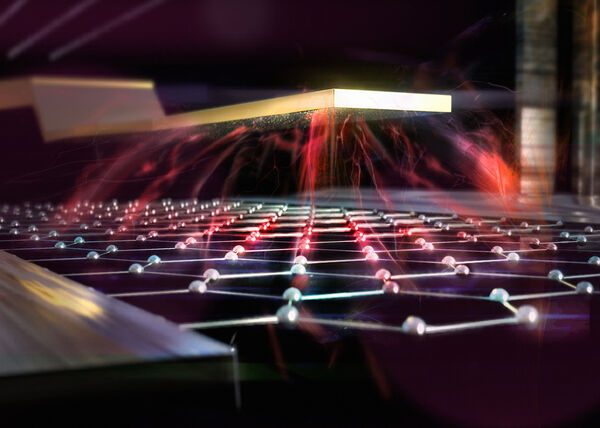
New detector breakthrough pushes boundaries of quantum computing
"A new paper published in Nature shows potential for graphene bolometers to become a game-changer for quantum technology Physicists at Aalto University and VTT Technical Research Centre of Finland have developed a new detector for measuring energy quanta at unprecedented resolution. This discovery could help bring quantum computing out of the laboratory and into real-world applications. The results have been published today in Nature. The type of detector the team works on is called a bolometer, which measures the energy of incoming radiation by measuring how much it heats up the detector. Professor Mikko Möttönen’s Quantum Computing and Devices group at Aalto has been developing their expertise in bolometers for quantum computing over the past decade, and have now developed a device that can match current state-of-the-art detectors used in quantum computers. ‘It is amazing how we have been able to improve the specs of our bolometer year after year, and now we embark on an exciting journey into the world of quantum devices,’ says Möttönen." [...]
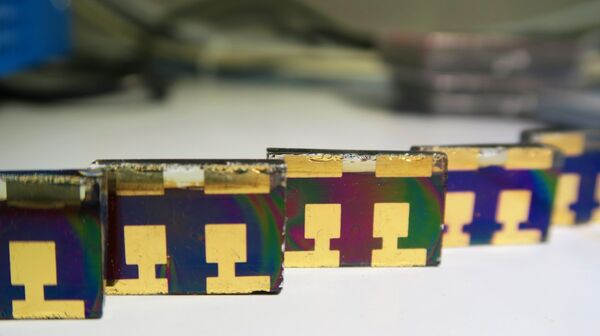
Chemical innovation stabilizes best-performing perovskite formulation
"Publishing in Science, researchers at EPFL have successfully overcome a limiting problem with stabilizing the best-performing formulation of metal-halide perovskite films, a key player in a range of applications, including solar cells. Perovskites are a class of materials made up of organic materials bound to a metal. Their fascinating structure and properties have propelled perovskites into the forefront of materials’ research, where they are studied for use in a wide range of applications. Metal-halide perovskites are especially popular, and are being considered for use in solar cells, LED lights, lasers, and photodetectors. For example, the power-conversion efficiency of perovskite solar cells (PSCs) have increased from 3.8% to 25.5% in only ten years, surpassing other thin-film solar cells – including the market-leading, polycrystalline silicon. Perovskites are usually made by mixing and layering various materials together on a transparent conducting substrate., which produces thin, lightweight films." [...]

Sensor with 100,000 times higher sensitivity could bolster thermal imaging
"Army-funded research developed a new microwave radiation sensor with 100,000 times higher sensitivity than currently available commercial sensors. Researchers said better detection of microwave radiation will enable improved thermal imaging, electronic warfare, radio communications and radar. Researchers published their study in the peer-reviewed journal Nature. The team includes scientists from Harvard University, The Institute of Photonic Sciences, Massachusetts Institute of Technology, Pohang University of Science and Technology, and Raytheon BBN Technologies. The Army, in part, funded the work to fabricate this bolometer by exploiting the giant thermal response of graphene to microwave radiation. “The microwave bolometer developed under this project is so sensitive that it is capable of detecting a single microwave photon, which is the smallest amount of energy in nature,” said Dr. Joe Qiu, program manager for solid-state electronics and electromagnetics, Army Research Office, an element of the U.S. Army Combat Capabilities Development Command’s Army Research Laboratory." [...]

Superconductivity with a twist explained
"Leiden physicists and international colleagues from Geneva and Barcelona have confirmed the mechanism that makes magic-angle graphene superconducting. This is a key step in elucidating high-temperature superconductivity, a decades-old mystery central to physics, which may lead to technological breakthroughs. Magic-angle materials form a surprising recent physics discovery. 'You take a sheet of graphene', says Sense Jan van der Molen, referring to the two-dimensional material made of carbon atoms in a hexagonal pattern, 'then you put another layer on top of it and twist the latter by 1 degree. This way, you suddenly get a superconductor.' At a temperature of 1.7 Kelvin, twisted bilayer graphene (tbg) conducts electricity without resistance." [...]

3D camera earns its stripes at Rice
"Engineers develop Hyperspectral Stripe Projector to quickly merge depth, spectral data Stripes are in fashion this season at a Rice University lab, where engineers use them to make images that plain cameras could never capture. Their compact Hyperspectral Stripe Projector (HSP) is a step toward a new method to collect the spatial and spectral information required for self-driving cars, machine vision, crop monitoring, surface wear and corrosion detection and other applications. “I can envision this technology in the hands of a farmer, or on a drone, to look at a field and see not only the nutrients and water content of plants but also, because of the 3D aspect, the height of the crops,” said Kevin Kelly, an associate professor of electrical and computer engineering at Rice’s Brown School of Engineering. “Or perhaps it can look at a painting and see the surface colors and texture in detail, but with near-infrared also see underneath to the canvas.” Kelly’s lab could enable 3D spectroscopy on the fly with a system that combines the HSP, a monochrome sensor array and sophisticated programming to give users a more complete picture of an object’s shape and composition. “We’re getting four-dimensional information from an image, three spatial and one spectral, in real time,” Kelly said. “Other people use multiple modulators and thus require bright light sources to accomplish this, but we found we could do it with a light source of normal brightness and some clever optics.” The work by Kelly, lead author and Rice alumna Yibo Xu and graduate student Anthony Giljum is detailed in an open-access paper in Optics Express." [...]
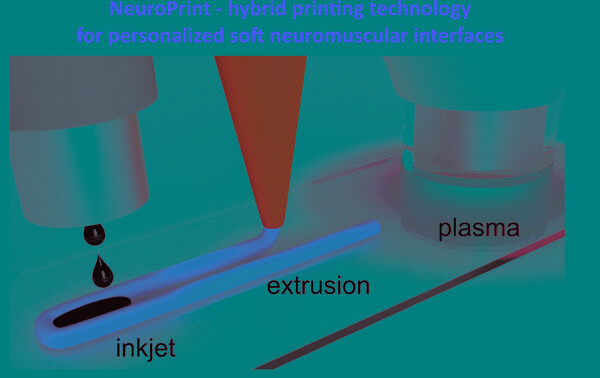
Scientists developed a technology for printing customised neuroprostheses on a 3D bioprinter
"Researchers from St Petersburg University have developed the NeuroPrint soft neuroprosthesis 3D printing technology. In the long term, this can help paralyzed people after spinal cord injury. The new development has already shown its effectiveness in studies on mammals and zebrafish. The results are published in Nature Biomedical Engineering. According to the World Health Organization, more than a billion people, that is, about 15% of the world’s population, have various forms of disability. Every year, up to half a million people receive spinal cord injuries, which are often accompanied by paralysis, and disorders of autonomic functions." [...]
Projetos Maker
Diversos Projetos interessantes.

1A Over Current Protection Load Switch
"The Over-current limit load switch project presented here provides full protection to devices and loads from access load conditions. The default current limit is set to 1 Amp, however, this load limit is adjustable from 0.4A to 2A with the help of R4 ISET resistor. When an overload condition occurs circuit responds to that overload condition that lasts longer than a fixed blanking period by turning off the load, followed by a retry after the auto-restart time, auto-retry time is 127.5ms. Flag output is pulled up with R1 and the board provides active low output in a fault condition, normally Flag output is high. Power good output is also pulled up and it’s an open-drain output to indicate that the output voltage has reached 90% of the input voltage. The input range of this circuit is 5V to 24V DC." [...]
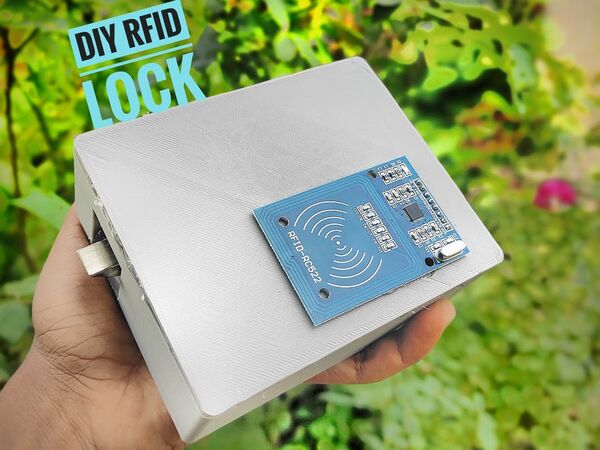
DIY RFID DOOR LOCK System
"How To Make Arduino Based Rfid Door Lock The arduino based RFID door lock system is secure and responsive as compared to other systems. With the use of arduino, it becomes much easy to design. Program a code and upload it to arduino just like a plug and play device. It is simple and cost efficient project and can be used as a basic access control mechanism. Their main advantage is contactless communication and RFID tags can work in any environmental conditions. Supplies: You'll nees Some Componenets Plastic Box Rfid Module 12V solenoid Lock Arduino nano 1ch Relay Module Some Jumper Wire 5V TO 12v CONVERTOR DC Socket 5V adapter" [...]
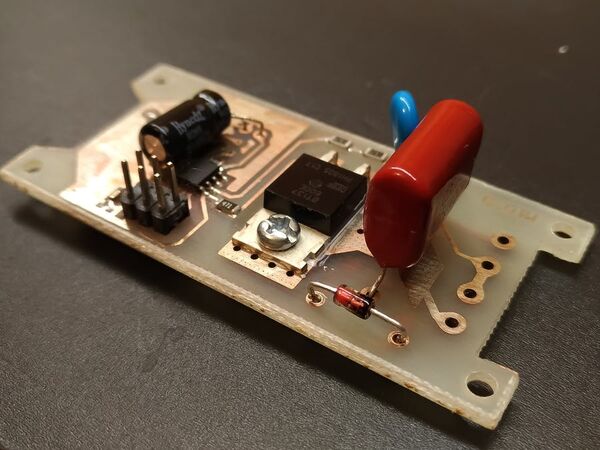
ATtiny13-Based, Key-Controlled Simple Dimmer
"A tiny dimmer with corrected output for resistive loads. Controlled with 3 keys and showing current value on 8 tiny colored LEDs. Based on this project, I made a general purpose dimmer for incandescent bulbs or soldering irons with these advantages: Key controlled: There are 3 keys for up, down and turning the load on/off. 8 LEDs to indicate the percentage of power. Corrected output, so the light/heat of load is linear based on the current dimmer value. Saving the value to eeprom to remember the values after reset." [...]
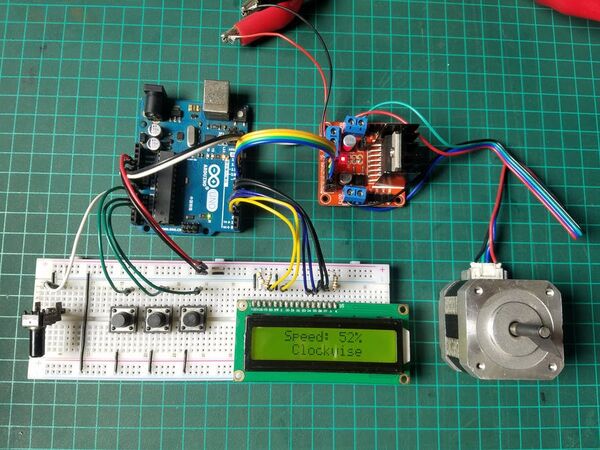
Stepper Motor Speed Controller
"How To Make a Stepper Motor Speed Controller using Arduino and L298 Motor Driver" [...]
DIY GPS Tracker --- Python Application
"I participated in a cycling event two weeks ago. After finished, I wanted to check the route and the speed I rode at that time. Unfortunately, it was not achieved. Now I use ESP32 to make a GPS tracker, and I will take it to record my cycling route next time. The GPS tracker can save the location and time information to the SD card, and this information can be processed and draw a chart of distance and speed with the PC software. Supplies: Hardware: MakePython ESP32 (with Wrover) MakePython A9G MakePython A9G board is GPS/GPRS expansion board for MakePython." [...]
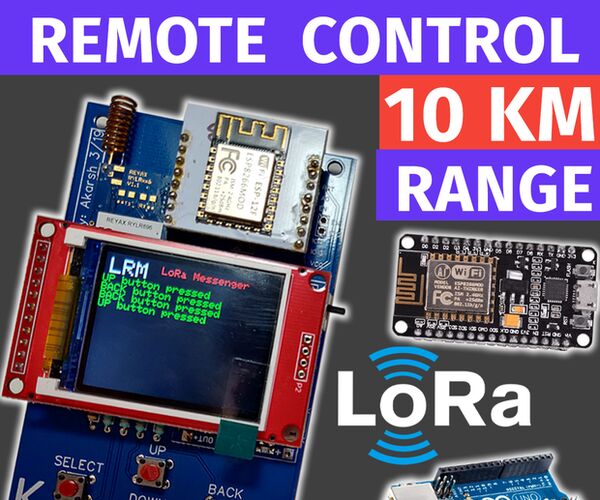
LoRa Based Remote Controller | Control Appliances From Large Distances
"Hey, what's up, Guys! Akarsh here from CETech. In this project, we are going to create a remote control which can be used to control a variety of instruments such as LEDs, motors or if we talk about our day-to-day life we can control our home appliances as well from a distance which is in the range of km and that too without any internet. You might be thinking that what kind of magic remote is this but let me tell you that there is no magic. The thing behind this remote is our one and only LoRa module. What we will be doing is that we are going to recreate a breadboard version of the LoRa based remote controller that we created in one of our older projects." [...]
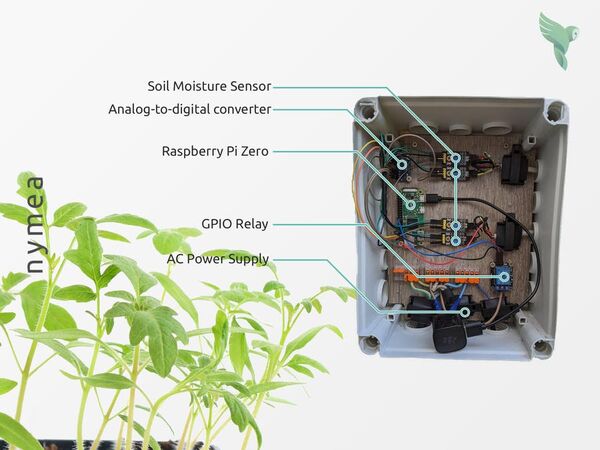
Smart gardening without coding - all free and open source
"All open source, no coding, remote accessible DIY automated smart irrigation. Not this time! I've been growing some tomatoes, chili peppers and other vegetables on my balcony for a couple of years now and while in general I did reasonably well (I'm really not a gardener but I enjoy figuring out how to make things grow) the biggest issue was really when in August I went abroad for summer holidays and instructed my neighbors to take care of my plants. While they probably did their best, it wasn't really enough. One year I returned and the tomatoes were close to drying out (reducing the harvest quite a bit), the other year they were flooded. So I decided that this year I'd take care of it myself." [...]
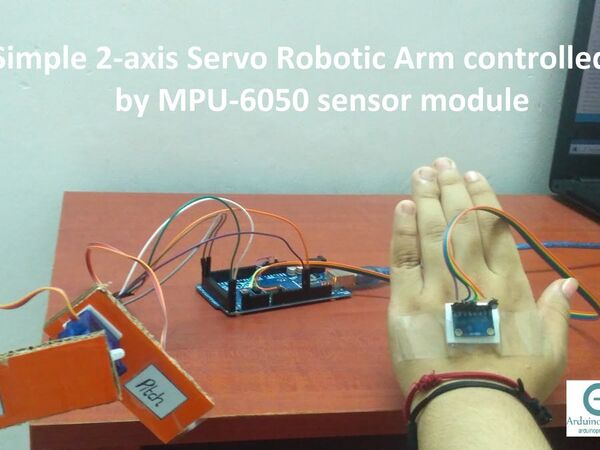
Simple 2-axis Servo Robotic Arm controlled by MPU-6050
"An easy and interesting project in which you use a MPU6050 (Accelerometer + Gyro) sensor module to control a simple 2-axis Servo Robotic Arm What is an MPU-6050 sensor module? The InvenSense MPU-6050 is a low-cost, highly accurate inertial measurement unit (IMU) with six degrees of freedom (DOF). IMUs can measure acceleration, inertia and a number of other parameters to allow you to determine their spatial position and velocity. It contains a MEMS 3-axis accelerometer and a MEMS 3-axis gyro in a single chip. It also has an onboard Digital Motion Processor (DMP) which processes complex 6-axis MotionFusion algorithms. This sensor module is also capable of accessing external magnetometers or other sensors through an auxiliary master IIC bus to provide complete 9-axis MotionFusion output." [...]

Pixie - Let Your Plant Smart
"Pixie was a project developed with the intention of making the plants we have at home more interactive, since for most people one of the challenges of having a plant at home is to know how to take care of it, how often we water, when and how much sun is enough, etc. While sensors work to obtain plant data, a LED display, purposely pixelated (hence the name Pixie), displays basic expressions that indicate the state of the plant, such as joy while it is being watered or sadness if the temperature is too high, indicating that it should be taken to a cooler place. To make the experience even more interesting, other sensors such as presence, touch and luminosity have been added, translating into other expressions that make it seem that you now have a virtual pet to take care of. The project has several parameters where it is possible to customize the limits and needs of each case, considering the diversity of plants as well as sensors of different brands. As we know, there are plants that need more sun or water while others can live with fewer resources, such as cacti for example, in cases like this, having parameters is a must have. Throughout this article, I will present the operation and an overview about how to build a Pixie using a little knowledge of electronics, components easily found in the market and a 3d printed case." [...]

Arduino Theremin
"Arduino Based Theremin with MOZZI Library and LDR in this post, I have set up one of its example setup which is an LDR-based theremin, which basically is a pulse modulation setup that utilizes LDR as a Sensor. to sense the light intensity and modulates sound according to that. " [...]

ESP8266 Duck Hunt
"Hello there! Today i will make a short instructable how to make a little game pcb board to play duck hunt with Esp8266. Lets start! n order to make this instructable you will need the following. Parts needed: - Esp8266 Esp12E/F (programmed as Wemos D1 mini) - ESP12F burning fixture/optional/ - SSD1306 oled display - Custom pcb board - 6 pushbuttons - 6 standard 10K resistors - A 3 pin switch - JST_2-PIN_2.54MM - JST PH 2-PIN 2.0MM - Standard arduino DC Jack - AMS1117 3.3 and 5V voltage regulator (SOP223) - 2X 47uF electrolytic capacitor - 2X4 female pin header" [...]

FPGA Media Player
"This project is a FPGA based media player which is capable of playing Motion JPEG encoded video over HDMI or VGA on commonly available FPGA boards. Features 800x600 25fps video (higher resolutions may also be possible) 44.1KHz stereo audio (I2S or SPDIF) Hardware accelerated JPEG decoding SD/MMC card interface (FAT16/32 support) MP3 playback (SW codec) JPEG stills display IR remote control" [...]
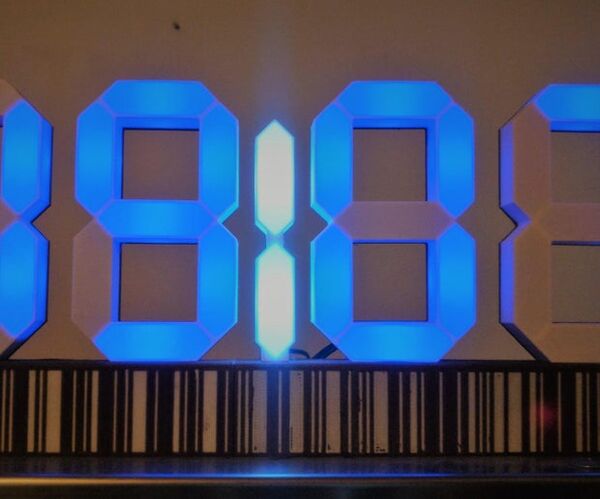
7 Segment Clock Version 2
"Hello! After a request from Instructables user regarding availability of 12h format, i took advantage to make substancial changes to the original project. During using of the version 1 i felt the need to make a stand-alone version, so I made it possible to modify all the parameters directly from the clock, without using the PC. For anyone hasn't read my previous instructables, it's a common 7 segment led clock with some extra features: 7 different minute change transitions 3 pre-setted colors for time slots ambient light intensity auto dim auto shutdown/start when there is no need to show time auto daylight saving time adjustment Version 2 allow you also to: change time format 12/24h easily modifiable parameters The parameters that can be modified directly from the clock are: wake up/shutdown time colors for time slots date/time time format 12/24h These data are now stored inside Arduino eeprom together with the chosen transition mode. I've also prepared a quickstart guide in the next step. The frame is 3D printed, powered by an Arduino Nano, DS3231 and WS2812 leds." [...]
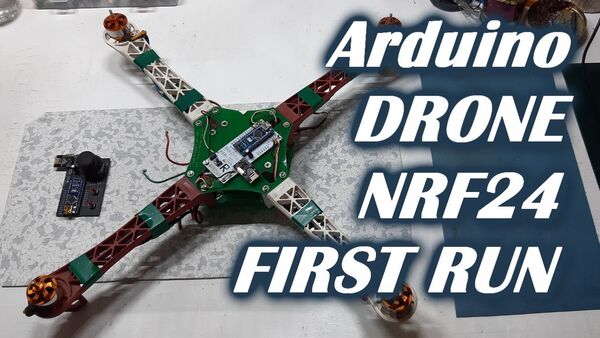
NRF24 Based Drone Setup
"Just another "DRONE PROJECT" with a custom Transmitter and Reciever setup based on Arduino Nano and NRF24L01 Module" [...]
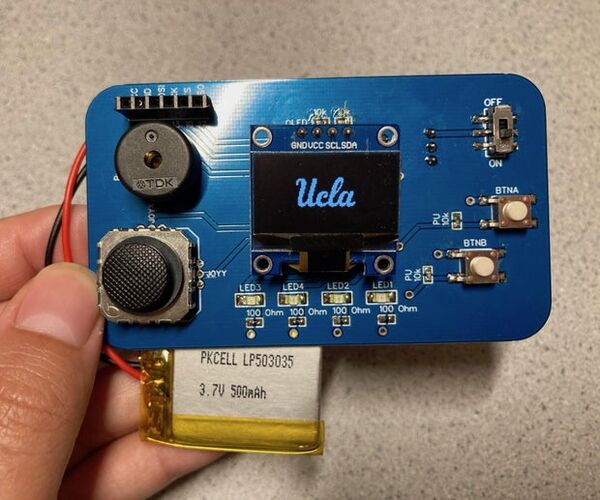
Mini Game Console With ATTINY84 and OLED Display
"Follow this tutorial to create and customize your own ATTINY84 mini game console! Even if you are a beginner or pro hobbyist, you will be walked step by step from start to finish on how to create the PCB for the game console and program games onto your ATTINY84 microcontroller. " [...]

Digital clock (time watch) using FPGA
"Digital clock (time) on 4 single 7 segment common anode display implemented hardware on Xilinx Spartan 6 FPGA. Digital clock (time watch) on 4 single 7 segment common anode display implemented hardware on Xilinx Spartan 6 FPGA. Use.ucf (implementation constrains) file to assign user IO ports of FPGA to Inputs & Outputs of.vhd (VHDL) file. " [...]

How to Make NTP Clock Using ESP8266 and 74HC595
"The main controller in this project is the ESP8266 which is contained in the Wemos D1 Mini Module. With integrated WiFi in it, it allows many things to be done. One of them is making a clock using NTP (Network Time Protocol). NTP can be used to sync all network devices to UTC Time in a few milliseconds. By using NTP, clock making does not need an additional DS1307 module to get time data. This clock consists of 4 digit numbers." [...]

Component Tester UNO Shield
"Hola Folks!! In my past component tester projects - Component Tester in a keychain and USB Component Tester I received many comments and messages asking for an Arduino compatible version of the component tester. The wait is over folks !!! Presenting Component Tester UNO Shield...🥁 Similar functionality as of USB Component Tester, with all through-hole components and a little button to trigger the test from the board itself. It gives you the flexibility to upload the code via standard Arduino UNO USB cable. So, you don't need to re-flash the bootloader." [...]

Mirroring Robot Movements with Packet Radios
"Use a couple of packet radio boards to mirror one robot's movements in the other one from up to 500m away. Swarm Robots The idea of having a large number of robots doing tasks in unison is nothing new, as there have been quadcopters drawing designs with LEDs at events like the Sochi Olympics, and convoys of trucks all moving together. What I wanted to do with this project was explore how this could be accomplished using cheap hardware and at greater distances apart, since Bluetooth can only reach about 45m away before the signal becomes too weak. Packet Radio Principles of Operation The Adafruit Feather M0 used for this project contains an onboard RFM69 radio module, and it can operate in one of two modes. The first one is a continuous stream of data from one point to the other, much like how a pair of walkie-talkie radios would function. This can lead to a lot of data being missed or corrupted, and it's more difficult to build an application layer on top of it." [...]
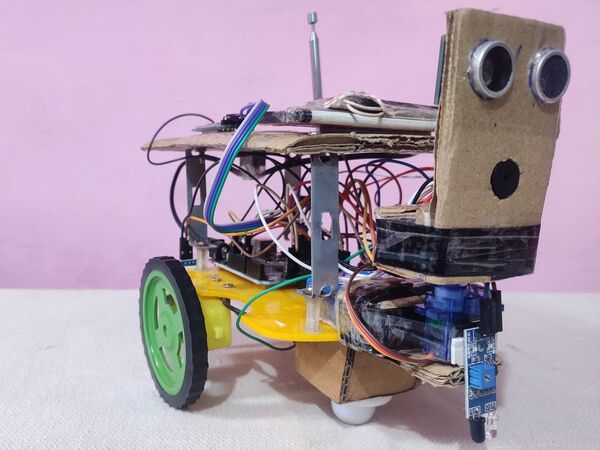
Auto Obstacle Avoidance & Table Edge Detection Robot
"A multi functional Arduino UNO based obstacle avoidance with Ultrasonic sensor and table edge detection using IR sensors. We name it RobotO. This is the version 3 so it is RobotO.3. Let's introduce, RobotO.3 is an Arduino UNO based object avoidance and Table edge detection or fall prevention robot which uses HC-SR04 ultrasonic sensors in order to detect obstacle and IR Sensor Module in order to detect edge to prevent fall from the table. RobotoO.3is the third iteration of RobotO series so it has many features. So basically it can run in two mode." [...]
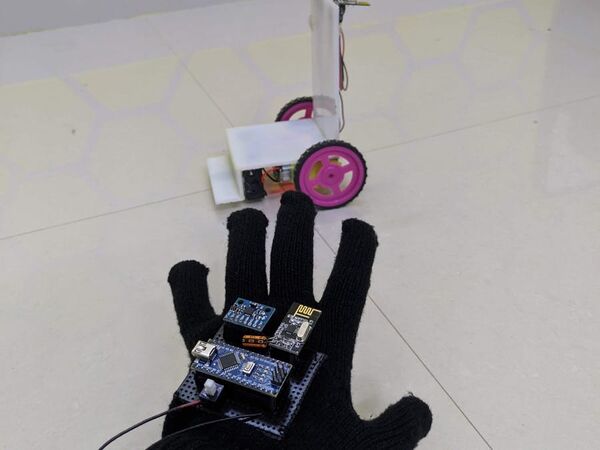
Hand gesture control wheelchair for disabled people
"With the help of hand gesture corresponding to the Accelerometer sensor the wheel chair will move The percentage of disabled people has increased in both rural and urban part of India. The disability could be by birth or due to some medical or accidental reason. The aim of this project is to make a hand gesture controlled wheel chair and using Accelerometer as sensor to help the physically disabled people in moving from one place to another just by giving direction from the hand Today in India many people are suffering from disability, there are people whose lower half of the body is paralyzed. This Wheelchair will add on to the comfort and make the life of people bit easier" [...]
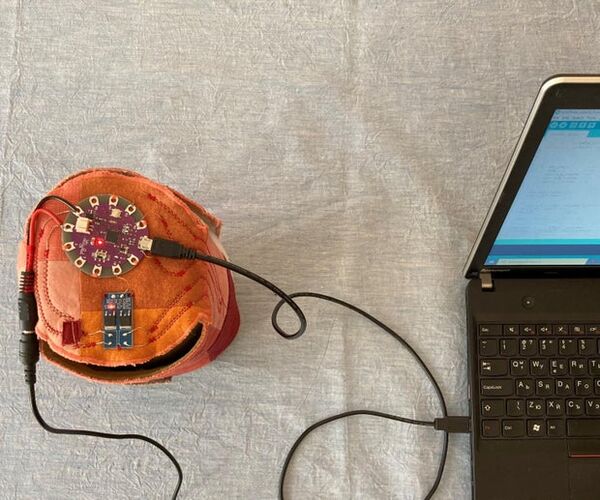
Fermentation Quilt
"This project was produced during an artist residency with Loomia in 2020. Fermentation Quilt is a cloth equipped with soft heaters along with thoughtful textile structures that offers a user the chance to think about their personal heritage and cultural context while participating in a daily ritual of making bread, yogurt, or other fermented foods. Inspired by the traditional Bulgarian yogurt Petars grandmother K (and many great grandmothers before her) made using hand-knit scarves, Fermentation Quilt is both a futuristic object and a mirror for personal narrative and cultural history. In the wake of pivotal, current movements like Black Lives Matter and Environmental Sustainability when we are all asking, how can I be a more thoughtful neighbor and consumer?, this project weaves together the practical application of Loomia e-textiles with a framework for actively incorporating reflection into our everyday lives. We are inspired by artists and thinkers like Ashley Jane Lewis, Lauren Fournier, Shaina Agbayani, Robin Zabiegalski, and Ursula K. LeGuin along with social movements like the American Suffragettes and others. Additional Note: If youre curious to learn more about sewing, soldering, electrical circuitry, coding, quilting, e-textiles, or fermentation, we recommend you consult the other incredible resources available in those disciplines online or elsewhere." [...]

Water Optic Communication
"Introduction I was recently watching the TV show Modern Marvels where they were doing this episode on "glass" and spent some time showing how fiber optic cables work. They showed that the concept of total internal reflection also applies to water (I believe they had the bucket of water with a hole so water was flowing out of it in a curved shape with a laser beam bouncing through the stream.. if not I saw it somewhere else). I was curious if I could fill a rubber hose with water and transmit data through it using a bright LED using this property. I ended up getting it working and it's like... speed of light fast! Well, speed of light blinking UART at 9600 baud. I used a Microchip ATtiny85 that basically relays the signals from a USB/UART cable." [...]

DIY Arduino based Bobbin Winding Machine
"Hello makers in this post about DIY automatic Arduino based bobbin winding machine. Bobbins are the small metal spools used in sewing machine, bobbins are filled with thread to stich cloths. This bobbins are frequently getting empty and you need to rewind it with thread again and again. So I made this machine it can automatically wind thread to maximum 12 bobbins in single run. there are already many bobbin winding machines are available in market. But there prices are more than 500$ but my this DIY arduino based bobbin winding machine can build under 100$." [...]

LA104 pocket logic analyser operating system
"LA104 is another nice piece of handheld hardware coming from e-design / miniware company similar to their previous product - pocket digital storage oscillosope DS203. This time they designed wholly digital device without analog circuitry featuring 4 general purpose IO signals and 4 digital inputs processed by AG1K FPGA chip, the processor used is the same as in DS203 - STM32F103VCT6. Device is battery powered, charged through USB micro connector, its display (ILI9341) offers resolution of 320x240 pixels and the storage EEPROM has this time capacity of 8MB. Check the scheme here Flashing is done by holding first function button during powering up and by copying firmware HEX file onto the virtual flash USB drive formatted as FAT12. This could be tricky, since this approach does not work on Mac OSX. For some reason the default copying procedure after mounting this USB drive on OSX is different than the programmers at e-design expected, it works reliably only on Windows machines." [...]

Solar Scare Mosquito 2.0
"An open-source IoT platform to monitor and prevent epidemics such as Malaria, Dengue and the Zika Virus. This solar-powered device eliminates mosquito larvae in stagnant water bodies such as water tanks, swamps and micro-dams. The system allows mosquitoes to lay eggs at dawn and dusk and the intermittent ripples during the day prevent larvae from breathing at the surface. In addition, a built-in microphone captures the wing-beat frequencies of mosquitoes that are naturally attracted to standing water, helping us to identify the species and sex of the mosquito. With a network of these connected devices installed among at-risk populations, we will obtain a real-time estimate of the presence of dangerous mosquitoes. Using this data, we will create the early warning system for all mosquito-borne epidemics." [...]
That's all Folks!



